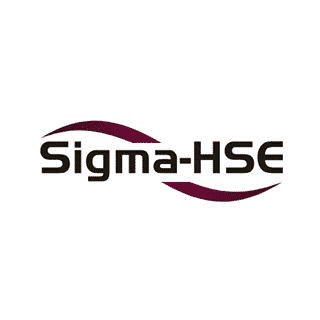From Hazard to Harmony: Process Safety in the Pharmaceutical Industry
Just a few years ago, there were significant global efforts from the pharmaceutical industry to research, develop, produce, and supply vital medications and vaccines in the fight against COVID-19.
During the early stages of the pandemic, pharmaceutical manufacturers had to rapidly scale the manufacturing of essential drugs to manage and treat those in critical care.
Sometime later came the development and distribution of vaccines – which occurred in the space of a year.
Considering the mumps vaccine took four years to develop, the scale of the entire drug development process from R&D to production was a remarkable feat.
From COVID-19 vaccinations to the creation of paracetamol, process safety in the pharmaceutical sector relies on a thorough understanding of all dangerous substances and entire processes to mitigate potential disasters.
In this short blog, we will detail a few challenges that the pharmaceutical industry faces and how they can ultimately be resolved through process safety competence.
Have there been any recent pharmaceutical incidents?
The very nature of the pharmaceutical industry guarantees that there will always be an element of uncertainty unless the process itself is solid.
Although we were fortunate enough not to have experienced a major safety incident at a COVID-19 vaccine manufacturing site, there was a report of an explosion at the SCI Pharmtech factory in Taoyuan City, Taiwan in the early stages of 2020.
Process safety & the pharmaceutical industry - a brief overview
Pharmaceutical companies face a range of challenges.
From material sourcing to the correct storage of chemical materials, pharmaceutical companies must ensure that their processes and procedures for manufacturing, storing, and using APIs and excipients are intrinsically safe and as consistent as possible.
However, a major problem arises when, as seen with COVID-19, pharmaceutical organizations have to rapidly research, develop, and then scale the manufacturing of a specific product.
Given the logistical complexities of a global vaccine supply, it’s difficult to anticipate exactly what other sources of problems could emerge and how each of them might be dealt with.
What would happen, for example, if an API provider suddenly becomes subject to restrictions or experiences delays in acquiring raw materials?
What would happen if a supplier must change a single compound in their material?
What types of processing equipment are usually present?
The pharmaceutical industry manufactures many types of unique compounds, hazardous chemicals, and dangerous substances using various processing equipment.
To manufacture end products, there are a range of processes involved.
This can include storing, processing, handling, and packaging materials that can potentially create hazardous workplace conditions.
This, in turn, may increase the risk of fire and explosion.
Typical equipment used in pharmaceutical manufacturing may include:
Pneumatic Conveyors
Dryers/Granulators
Tableting Machines
Sachet Filling
Rip & Tip Operations
Centrifuges
Grinders and mills
Dust Collectors
Mixers/Blenders
Hoppers and Silos
FIBC Handling (charging & discharging)
Specific equipment will vary depending on the type of product being manufactured for particular manufacturing processes.
It must be remembered that each piece of processing equipment will come with its own specific hazards that must be accounted for.
Understanding process safety legislation
In order to mitigate the risk of fire and explosions, the pharmaceutical industry is required to comply with a range of process safety legislation.
Compliance with National Fire Protection Association (NFPA) standards, such as NFPA 652 (Standard on the Fundamentals of Combustible Dust) and NFPA 30 (Flammable and Combustible Liquids Code) are needed to address fire and explosion hazards associated with pharmaceutical manufacturing processes.
The Occupational Safety and Health Administration (OSHA) PSM standard (29 CFR 1910.119) is a major regulation that applies to facilities handling highly hazardous chemicals.
Pharmaceutical companies often need to comply with this standard, which requires establishing a comprehensive process safety management program to prevent and mitigate the risks associated with hazardous chemicals.
The Environmental Protection Agency (EPA) Risk Management Program (40 CFR Part 68) applies to facilities that handle regulated substances above specified threshold quantities. Pharmaceutical companies that use or store chemicals covered by the RMP rule are required to develop and implement a risk management plan to prevent accidental releases and minimize their impact on public health and the environment.
What challenges do pharmaceutical companies face?
Pharmaceutical businesses usually have dedicated process safety laboratories and process safety teams accountable for understanding and mitigating hazards associated with active pharmaceutical elements.
If these dedicated teams lack the understanding of any potential chemical hazards, it could lead to material loss and supply chain disruption.
The above would occur alongside an increased risk of potential injuries and/or loss of life.
Can Material Safety Data Sheets (MSDS) be relied on?
To adequately undertake a risk assessment or test hazardous substances adequately, a Material Safety Data Sheet (MSDS) is required.
MSDSs are used to understand and evaluate the physical properties of the material being processed.
However, you cannot rely solely on MSDS, as they may not provide all the data required to make informed process safety decisions.
As a result, additional testing is required to better understand material hazards and process risks.
Testing data from the Minimum Ignition Energy (MIE), Minimum Ignition Temperature, Cloud (MITcloud) or Minimum Ignition Temperature, Layer (MITlayer), for example, will help you understand your hazardous materials and how they relate to your process.
Active pharmaceutical ingredients and excipients
APIs are usually obtained via some form or combination of synthesis before being filtered, crystallized, purified, dried, and milled.
The AstraZeneca COVID-19 vaccine, for example, contained excipients and chemicals such as L-histidine hydrochloride Monohydrate, Magnesium Chloride Hexahydrate, Polysorbate 80, Ethanol, Sucrose, and Sodium Chloride.
Throughout the pharmaceutical manufacturing process, there are unique hazards that can be caused by active pharmaceutical ingredients and excipients that pose serious health risks.
These process risks can include:
Fire
The handling and storage of combustible solids and flammable liquids have the potential to create a fire hazard.
If an uncontrolled fire were to start, it may have the potential to escalate, spread, and create secondary explosion incidents.
Dust Explosions
Most active pharmaceutical ingredients and excipients are combustible powders with low Minimum Ignition Energies (MIE).
This means they are particularly prone to ignition from sources such as electrostatic discharge.
Dust layers and airborne dust clouds can create fire, flash fire, and explosion hazards.
Runaway Reactions
During the synthesis of APIs and/or excipients, uncontrolled chemical or exothermic reactions can become a danger.
These reactions can result in elevated temperatures and, ultimately, thermal runaway.
Thermal runaway can be caused by even the smallest deviation in a process.
This may include:
- the introduction of incorrect materials
- insufficient engineering design for reactor heat/energy transfer systems
- poorly written batch procedures/insufficient operator training.
An example of a runaway chemical reaction occurred at Corden Pharmachem, Cork.
An investigation highlighted deficiencies in the site and facility’s execution of its process safety management systems, particularly the HAZOP for this process.
Mitigating risks via a process hazard analysis
Potential hazards must be considered during the design of a new pharmaceutical process or when process alterations are expected to trigger a Management of Change review.
By conducting a process hazard analysis and understanding any prevention, control or mitigation gaps in a process, applicable safety hazards can be understood and managed.
API manufacturers, for example, must have robust processes in place to enable rapid scale-up.
But they must also implement measures that address the global interdependency of pharmaceutical supply chains to avoid unnecessary production delays.
Equipment selection and hazardous areas
When additional instrumentation must be purchased, the approach to selection should not just involve identifying equipment that is fit for purpose.
Instead, equipment selection must consider the installation of proposed equipment in hazardous areas.
In order to identify potentially dangerous areas and assess the risks associated with hazardous materials, organizations need to have a clear understanding of their processes.
The initial step involves determining whether a flammable or explosive atmosphere is possible.
If new equipment is intended to be utilized within a hazardous zone, it is crucial to inform the equipment supplier or manufacturer about the nature of the hazardous material.
Additionally, the supplier or manufacturer should be provided with the necessary safety data to ensure that any equipment built complies with essential safety requirements.
A range of hazardous area phases must be worked through before qualifying and validating performance for good manufacturing practice.
Changes to the process during scale-up
It’s crucial to recognize the challenges of scaling up while finding effective solutions to meet growing demand.
This must involve carefully designing or re-designing processes, using equipment and methods that mimic commercial processes, and thoroughly vetting suppliers of raw materials and intermediates to address potential material problems.
Experienced teams with prior problem-solving experience can quickly tackle issues, generate access to any missing data, and ensure the system’s smooth transition to larger scales.
When process design is executed properly, it sets the foundation for efficient scale-up.
Ultimately, understanding the importance of even minor changes on chemical processes and equipment design will help prevent issues and increase production capacity.
Conclusion
The pharmaceutical industry has faced significant market challenges in recent years, particularly during the COVID-19 pandemic.
The rapid development and distribution of vaccines showcased the industry’s ability to scale up manufacturing processes effectively.
Amidst the urgency, process safety considerations cannot be overlooked.
Risk assessments, compliance with regulations, a thorough understanding of potentially hazardous materials and areas, the selection of process equipment and attention to process design are necessary to prevent disaster.
Experienced process safety teams with problem-solving consulting, testing, and training expertise are invaluable in addressing the challenges the pharmaceutical industry faces during scale-up and normal operations.







